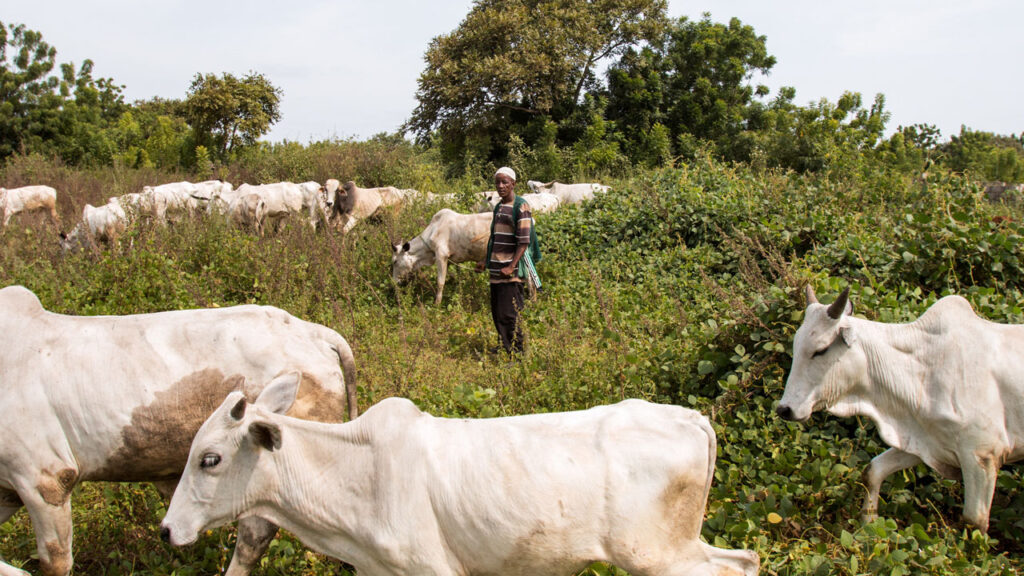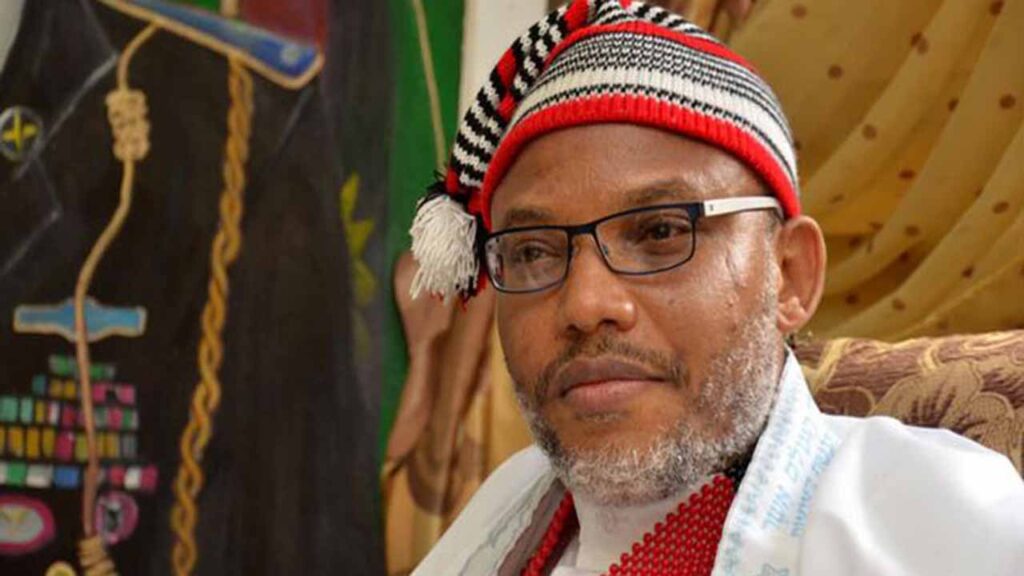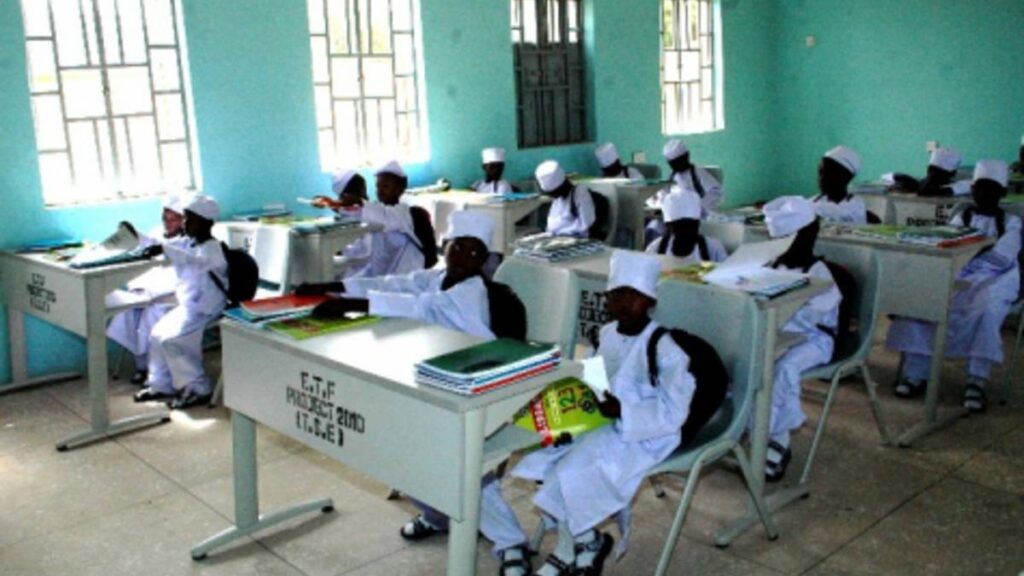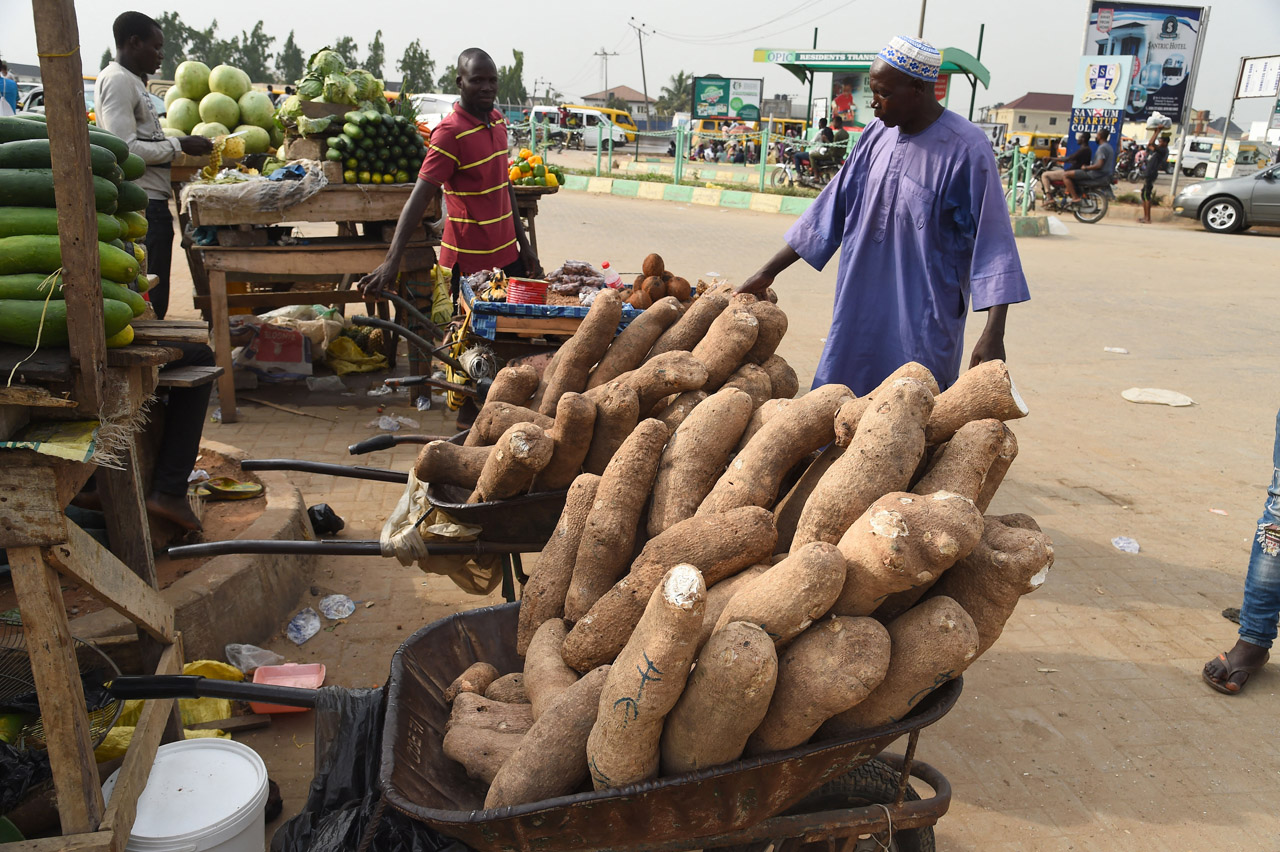
Despite the country’s position as the largest producer of yam across the globe, Nigeria currently faces shortage of the produce in the markets. Currently, a large population of the country is finding it difficult to access this crucial staple for homes, as it is gradually becoming affordable only to the rich, writes ASSISTANT FEATURES EDITOR, GBENGA AKINFENWA.
Yam, a preferred source of carbohydrate in Nigeria is gradually going beyond the reach of average citizens. Its scarcity in the last few months, primarily caused by limited supply from the farms, has led to the sharp increase in price, making it unaffordable to average Nigerians.
Thus, many Nigerians who saw yam as an alternative to rice when the price of rice skyrocketed from around N50,000 to N90,000 last year have retraced their steps owing to the issue of affordability.
The Guardian learnt that in Lagos, a sizable tuber of yam sold for between N300 and N400 as at May 2023 now costs between N1, 600 to N1, 700. An average size sold for between N650 and N750 now costs N3, 000 while bigger tubers cost N3, 500 and above.
In Ogun State, a dozen of medium size tubers, which sold for between N7,000 and N8, 000, currently sells for between N15, 000 and N17, 000.
According to the March 2024 inflation report by the National Bureau of Statistics (NBS), the inflation rate increased to 33.2 per cent in the month under review. The NBS said the rate, which represents 1.5 per cent points, increased from the 31.7 per cent recorded in February.
“This increase in the inflation rate in March was slower compared to the 1.80 per cent increase recorded in February 2024,” the report said.
It stressed that the inflation rate was driven by increase in the prices of food and beverages, coupled with energy and housing costs.
“The food inflation rate reached 40.01 per cent year-on-year, marking an increase of 15.56 percentage points from 24.24 per cent in March 2023,” the report said.
The surge in food inflation, according to the Bureau, could be attributed to the rising prices of items such as garri, millet and akpu (cassava flour), as well as yam tuber, water yam and others.
“On a month-on-month basis, the food inflation rate in March 2024 stood at 3.62 per cent, showing a decline of 0.17 per cent from February 2024, when it was 3.79 per cent.
“For the 12 months ending in March 2024, the average yearly food inflation rate was 31.40 per cent, an increase of 8.69 per cent points from the 22.72 per cent recorded in the previous 12 months ending in March 2023,” the report added.
A yam seller at the popular Ile-Epo Market, Oke-Odo, Lagos, Mrs. Joke Idowu, told The Guardian that it is practically becoming impossible for some of them to continue with the business as wholesalers increase price almost on a daily basis.
“It is becoming very hard for us to break-even, considering the price we are buying from the North. For instance, if we get an average tuber at the rate of N2, 900 directly from a trailer, it will be difficult for us to sell it for more than N3, 000, meaning a profit of just N100.
“With the current state of the country, even if I sell 10 tubers a day, it means I will be making a profit of N1, 000. What impact will N1, 000 have on me? Majority of us are considering moving to other lines of business as the situation is getting worse by the day.
“With our status as a major yam producing country, Nigerians shouldn’t be paying high prices to get tubers of yam. We are suffering from hunger in the midst of plenty,” she said.
Yam cultivation is an area where Nigeria has comparative advantage over other countries across the world. The country is the largest producer of yam across the globe, producing over 70 to 76 per cent of the world’s yam output.
According to the Food and Agriculture Organisation (FAO), Nigeria produced 18.3 million tons of yams from 1.5 million hectares in 1985, representing 73.8 per cent of total yam production in Africa, followed by Côte d’Ivoire and Ghana as the world’s second and third largest producers of yams.
Investigations showed that at least 16 states – Benue,Cross River, Taraba, Delta, Nasarawa, Oyo, Edo, Ekiti, Imo, Kaduna, Kwara, Ogun, Ondo, Osun, Plateau and Adamawa – are predominant yam producers in the country, with Benue leading the pack.
The popular Zaki Biam Yam Market in Benue is the largest in the country, and maybe in Africa. It accommodates farmers from far and wide, while traders come from across the country and neighbouring Cameroun, Niger Republic and Ghana to make purchases.
There are other states where this crop is grown, though on a small scale and at a subsistence level, as yam is a very crucial staple for homes.
However, despite the enviable position the country occupies in yam cultivation, average Nigerian families now consume fewer yams as part of their menu due to shortage of supply amid growing demand. It was learnt that the growing demand for the root crop owes much to its various uses. Aside from consumption, it is used for festivals. In the South East, for instance, yam festivals are held to mark the harvesting of the crop. Also, as part of customs, presentation of tubers of yam is one of the requirements for marriage rites in some communities in Nigeria, among other uses.
The tuber crop is a good source of energy. Unpeeled yam has Vitamin C. Sweet in flavour, yam is consumed boiled (with cooked vegetables and others), pounded, fried in oil or roasted.
It is often pounded into a thick paste after boiling – pounded yam – and is consumed with soup. It is also processed into flour for use in the preparation of the paste. Its medicinal use as a heart stimulant is attributed to its chemical composition which consists of alkaloids of saponin and sapogenin.
Investigations revealed that the use of yam as an industrial starch has also been established, as the quality of some of the species is able to provide as much starch as cereals.
The Permanent Secretary, Federal Ministry of Agriculture and Rural Development, Ernest Umakihe, had last year warned that the country might soon resort to importing yam from China owing to the country’s failure to capitalise on its dominance of the global yam output.
He emphasised that the potential threat posed by Chinese yam imports to the local market could exacerbate unemployment and reduce income for yam farmers.
The Guardian learnt from a yam merchant, Mallam Idris Kalgo, that the bulk of yam currently sold in Lagos, Ogun and other neighbouring states are supplied from Nasarawa State, as supply has reduced from other yam producing states due to a series of challenges beyond the control of the farmers.
Kalgo, who sells the produce at Ijako market in Ogun State, noted that insecurity and herders/farmers clashes are the reasons yam production has declined, as majority of the farmers in the states are now living at Internally Displaced Persons (IDPs) camps after being driven out of their homes and farms.
He warned that just like other agro produce, the price of yam would continue to rise, “unless necessary steps are taken by the government, especially on security.”
He added: “This case is not limited to only yam; it will affect other produce. It may soon be difficult to buy these produce at cheaper rates because more farmers may jettison farming for their dear-lives.
“This means the country would not be food secure unless urgent steps are taken to assure and encourage farmers to return to their farms.”
Just a few months ago, FAO predicted that no fewer than 26.5 million Nigerians may face food crisis between June and August this year.
The body said states such as Borno, Sokoto and Zamfara, including the Federal Capital Territory (FCT) face bigger risk.
The FAO country representative, Dominique Kouacou, disclosed this during the presentation of the October to November 2023 round of the Cadre Harmonise (CH) food security and early warning analysis in Abuja.
The Cadre Harmonise analysis was conducted in 26 states and the FCT to ascertain the food security situation and make projections for the future.
He said about 26.5 million Nigerians may encounter food crisis this year, adding that the current cycle is happening after an unusual lean season that witnessed several shocks, ranging from persistent insecurity situations like insurgency and banditry.
He listed other challenges as natural resource-based conflicts, high cost of food and agricultural inputs due to high inflation, and severe dry spells in some states immediately after the onset of rains.
With this development, stakeholders, farmers and industry analysts are worried that the country may experience the worst if urgent steps are not taken by necessary authorities.
Recall that sometime in 2017 when Audu Ogbeh was the Minister of Agriculture and Rural Development, the country exported 72 tonnes of yam to earn foreign exchange.
Ogbeh, who stressed the need for such a move, said export was one of the ways Nigeria could prevent food wastage, lamenting the country’s poor post-harvest preservation capacity.
“There is really no shortage; new yams will be here in two weeks. The old stock is still there everywhere and people in the market are getting worried that new yams will come and nobody will touch the old ones.
“We actually over produce food here; 30 to 40 per cent of some of the food we produce is wasted because of poor preservation capacity, but this will not cause any hardship,” he assured Nigerians.
However, after the flag-off, there was no attempt at giving it a further shot till he left office, as a series of controversies surrounded the procurement of the yam.
An agricultural extension officer and lecturer at the Federal College of Forestry, Jericho, Ibadan, Oyo State, Nwachi Analechi, identified insecurity, scarcity of yam inputs, increasing inflation and other factors as causes of the scarcity.
He urged the government to assist farmers in the form of finances, inputs and provision of security to encourage yam cultivation.
He said: “Government needs to intervene and provide security for local farmers. It must make provision of farm inputs such as fertilisers, chemicals, seed yam and extension services easily available to farmers.
“Financial assistance for farmers such as loans, cooperatives and support services are very essential,” he said.
The National President, Yam Farmers and Marketers Association of Nigeria, Prof. Simon Irtwange, identified economies of production, insecurity, forex, ageing farming hands, cost of inputs and manual labour as major contributory factors to the scarcity of the produce in the country.
“The problem stems from the economies of production. If somebody travels to buy yam and transports it to Lagos, he is not going to Lagos to sell at the cost price; he is going to add his own transportation and profit. So, after production, the cost structure is very clear. At the farm level, the farmers don’t really cost their production; even the seed yams are just taken from the previous harvests. The labour for the farm many at times is done by their wives and children and they don’t put cost to it. So, if our farmers are really putting cost into production, yams will be much more expensive.
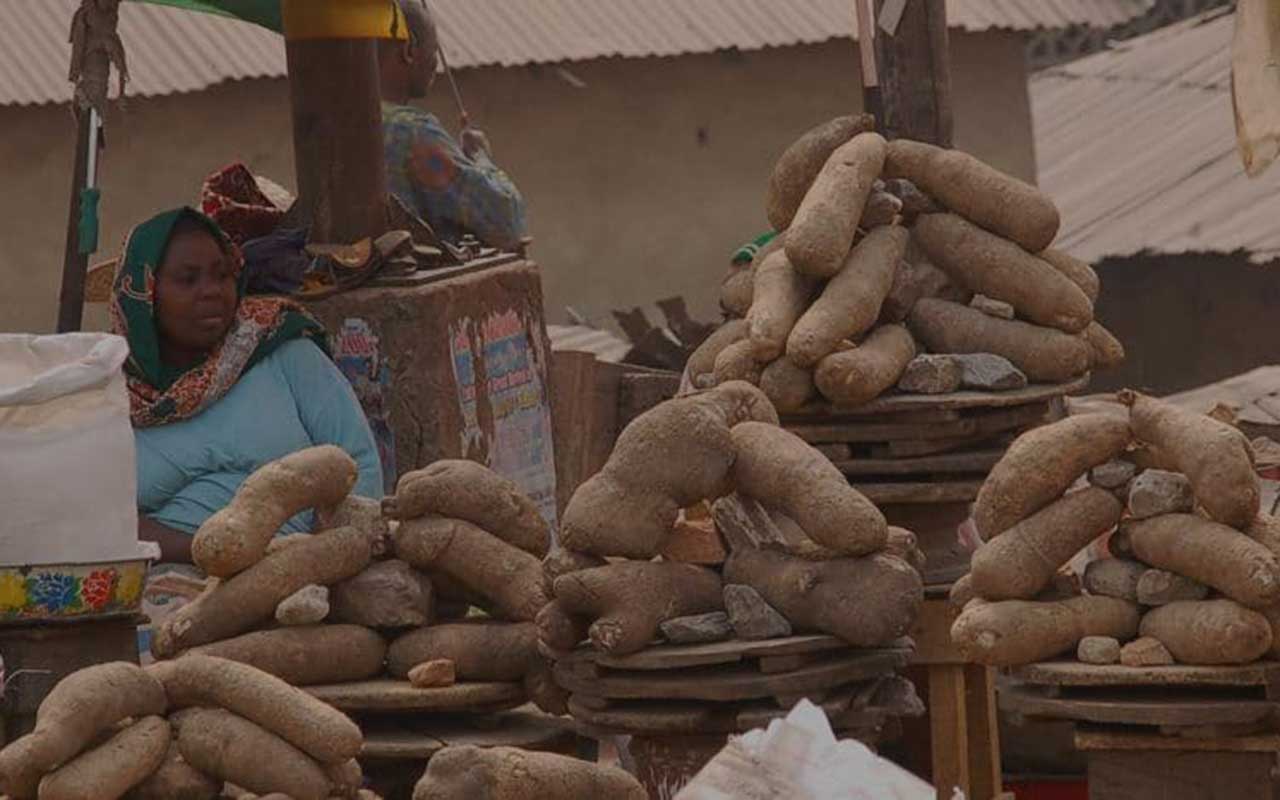 “There is a table, which we usually call the economies of production. Before the removal of subsidy, we were doing one hectare of yam for N1.5 million, which means all the costs on the hectare. Now, the reasonable thing to do is to divide what you have harvested, in order to get your money back, which is your cost of production, and sell in such a way that you will break-even.
“There is a table, which we usually call the economies of production. Before the removal of subsidy, we were doing one hectare of yam for N1.5 million, which means all the costs on the hectare. Now, the reasonable thing to do is to divide what you have harvested, in order to get your money back, which is your cost of production, and sell in such a way that you will break-even.
“Even if you are selling based on the cost of production, yams and other commodities will be expensive. Some people will say the price of yam is going up; what does the exchange rate have to do with the cost of yam produced locally? The issue again is that the yams we produce have a lot of foreign components into it – pesticides are brought from outside the country and are paid for in dollar rate. Most of the fertilisers that farmers are using are not locally produced; even those that are locally produced, their prices are also influenced by the forex component of the raw materials they import to manufacture these fertilisers, which is what is happening,” he explained.
Irtwange said insecurity is also contributing to the challenges facing yam production.
“One of the consequences of insecurity is the inability of farmers to put more land into productive use. Farmers are unable to expand their production; they are unable to put more land under agricultural production to use. So, that again has led to reduction in the quantity of produce that is available. So, insecurity has contributed.
“But again, for those of us in the sector, we have also identified the fact that everything about the production of yam is manual, from the beginning to the end. There is no aspect that is mechanised and then, the average age of a Benue yam farmer is now 60 years.
“So, these people don’t have the energy to make the heaps and the young people that should come in readily to take their place, many of them cannot afford to use cutlasses and hoes in production activities. Some of them have gone to the universities; some even prefer to come down to the town to ride bikes instead of the back-breaking activities of making those heaps. Some have decided to go into politics and want the easy way out.
“The number of people that are available to make those heaps has drastically reduced. In Benue now, even if you have a piece of land, it will be very difficult to get labourers. There are very few heap makers. That’s the challenge we are having in the sub sector,” he added.
As a way out, Irtwange said there is the need to look at the cost structure for all commodities to know the best way to tackle the issue.
“My advice to the government is to look at the factors that are driving the cost of production. If we look at the economies of production table, we can say what are those factors? Is it the seed yams? If it’s the seed yams that are driving the cost of production, the government should be ready to look at the various aspects of the production, look at the cost and see how best to intervene so that the cost of production can come down. Once we are able to push down the cost of production, we should be able to have yams and other commodities that are cheaper.
“As an association, we are advocating planting of yams on ridges; if we can begin to make ridges with tractors, if government can make available high-clearance ridgers, we can change our farming system from heaps, which for now, has no effective machine that can be used to make it.
“The National Centre for Agricultural Mechanisation (NCAM) has made some efforts at fabricating heaps making machines, but it takes a lot of space. So, instead of having 10,000 plants per hectare under the ridge system, with the machine, we may end up having 3,000 plants per hectare.
“If we get it right in the area of mechanised heaps making aspect of yam cultivation, other areas like planters will follow. That’s the outlook for the future. We are encouraging people to plant yam in sacks because most people don’t have access to land anymore,” Irtwange said.
The CEO of Fourteen Farms, Ifewara/Ife, Osun State, Julian Akinremi, attributed the development to the exchange rate issue, adding that the state of the economy cannot be ruled out since the yam farmers are also buying from the same market.
He said: “Farm produce are actually affected by exchange rates – machines, improved seeds and farm equipment are imported, hence they have a direct effect on the price of harvested farm produce. Farmers also have to pay for labour; the labourers will charge based on the current state of the economy.
“Chemicals and fertilisers are also necessary for the yield of farm produce and they are either imported or produced with materials that are imported, hence, they are affected by the exchange rate.”
Akinremi said in addition to that, farmers spend money generated from sales of their harvest in the same markets other people go to, noting that they need to be able to live above the poverty level when exchange rates go up.
“Items like transportation, post-harvest handling and other services like storage and warehousing are affected by exchange rates. Service providers increase prices based on the exchange rate and this affects payments made by farmers along the value chain,” he added.
He noted that Nigerians would have to endure the hardship for the next few months.

















